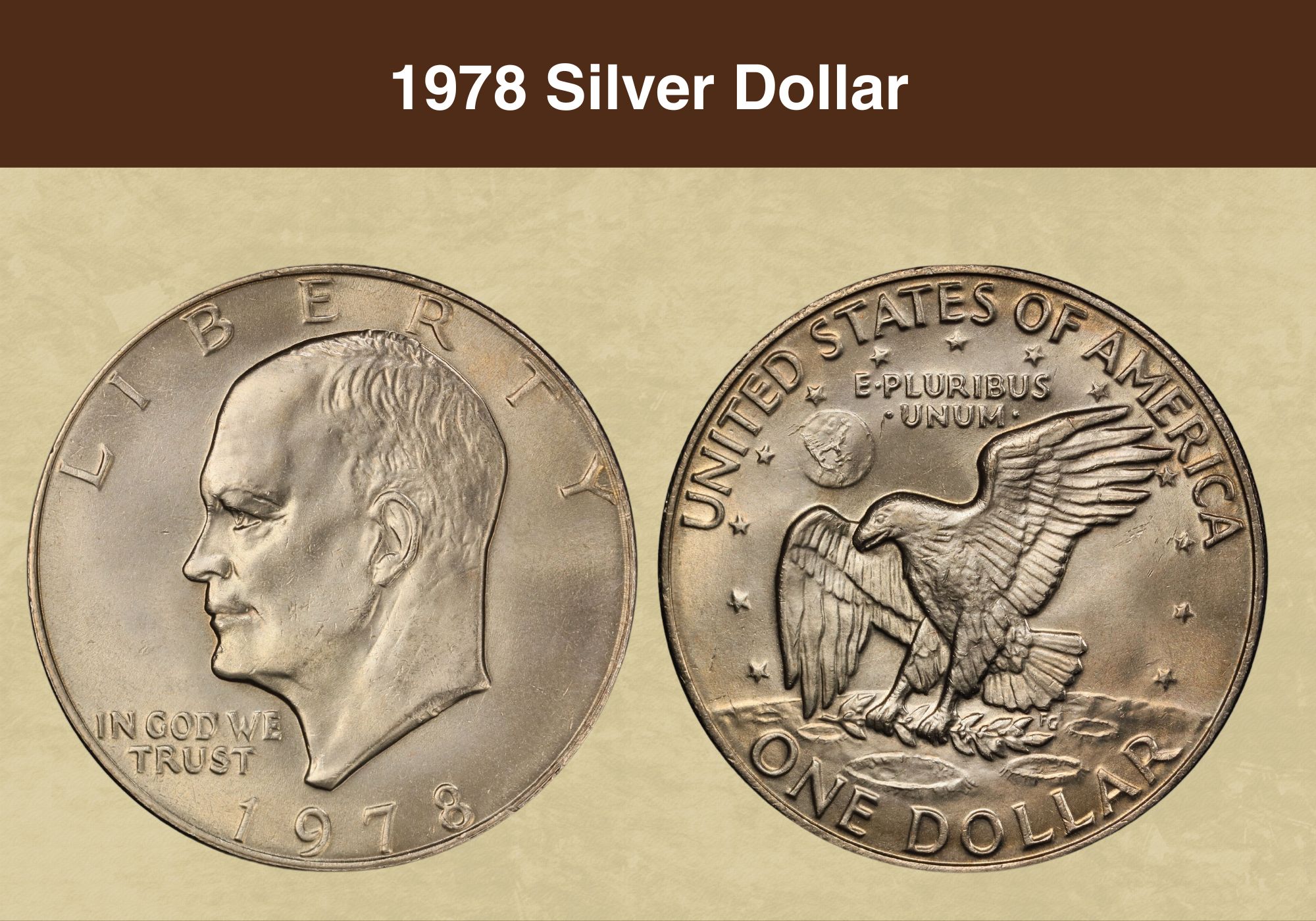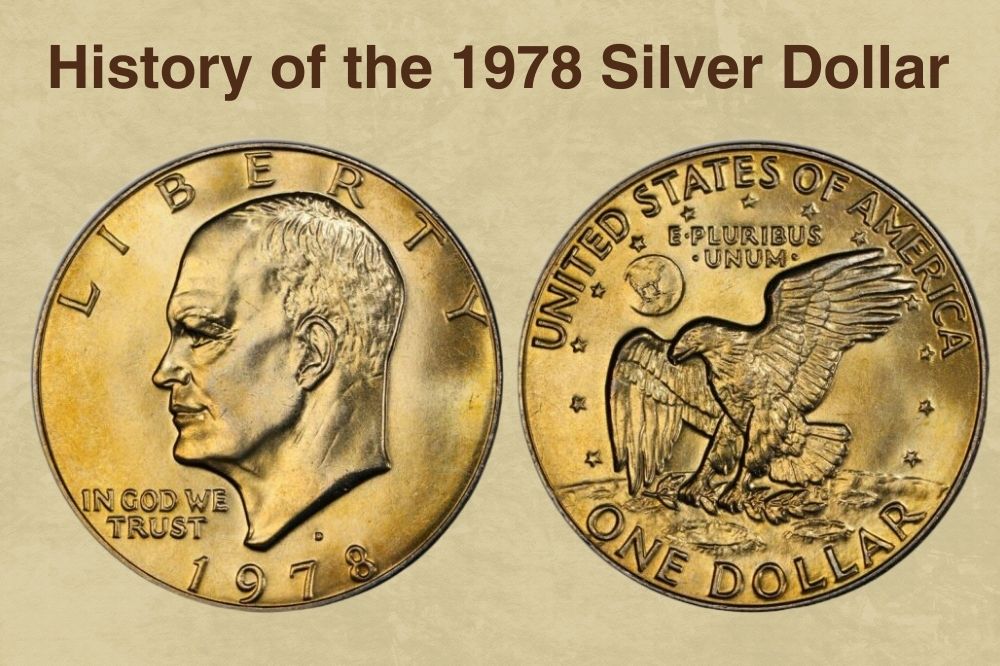
Coin Value Contents Table [hide]
- 1978 Silver Dollar Value Chart
- History of the 1978 Silver Dollar
- Features of the 1978 Silver Dollar
- 1978 Silver Dollar Value Guide
- 1978 No Mint Mark Silver Dollar Value
- 1978 D Silver Dollar Value
- 1978 S Proof Silver Dollar Value
- 1978 Silver Dollar Grading
- Rare 1978 Silver Dollar Error List
- Where to Sell Your 1978 silver dollar ?
- FAQs
Have you got a 1978 dollar that’s silver in color? Wondering if it could be valuable? Well, you’ve come to the right place to find out!
We’re going to look at the 1978 silver dollar value. We’ll find out about the different factors that influence it. And we’ll learn more about the design and history of this coin as we go.
Ready to find out how much your dollar coin is really worth? Then let’s get started!
1978 Silver Dollar Value Chart |
||||
| Mint mark | XF45 | MS60 | MS65 | MS67 |
| 1978 (P) No Mint Mark Dollar Value | $1 | $5 | $26 | $7,500 |
| 1978 D Dollar Value | $1 | $5 | $32 | $7,750 |
| PR60 | PR65 | PR68 | PR70 | |
| 1978 S Proof Dollar Value | – | Deep Cameo: $14 | Deep Cameo: $21 | Deep Cameo: $475 |
History of the 1978 Silver Dollar

First things first: the 1978 “silver” dollar isn’t actually silver at all. Dollar coins were made with real silver in a number of years, but not in 1978. The silver color comes from the cladding, made of an alloy of copper and nickel. And the core of the coin is pure copper.
It’s one of the series known as the Eisenhower dollars, after the image of the former president which appears on the obverse. The first Eisenhower dollars were struck in 1971, and 1978 marked the final year in which they were issued.
Eisenhower had died in March 1969, and many people felt he should be honored with a coin. But there was considerable controversy over whether or not the new coin should be made of silver.
The price of silver was rising at the time, so a silver coin would be more expensive to produce. But some people felt that using a base metal would be disrespectful to Eisenhower’s memory.
The first Eisenhower dollars were therefore a compromise. Most were made of copper clad in cupronickel, but a small number were made from a silver alloy.
The dollars struck in 1975 and 1976 were special issues, with a new reverse to mark the bicentenary of American independence. The majority were again copper clad in cupronickel, with a smaller mintage of silver alloy coins.
But from 1977 onwards, only clad Eisenhower dollars were struck. The silver coins were expensive to make. And the large size and weight of both versions meant that they were unpopular for everyday use.
The Mint began to experiment with smaller dollar coins. And finally, in 1979, the Eisenhower dollar was replaced with the smaller Susan B. Anthony dollar.




